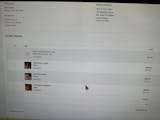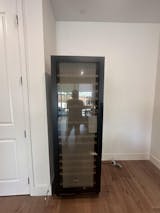
The Top 5 Mistakes People Make When Storing Wine at Home
Share
Fall is here and the holidays are upon us. Warm cozy kitchens, fire lit in the living room, cooking over a hot stove, all create internal temperatures in your home to feel cozy.
But for your wine, it's a different story.
You know we love our reds and whites for different moods, time of year and time of day. But It doesn’t matter if you’re opening a weeknight Pinot or collecting rare vintages — how you store your wine matters. The truth is, most wine lovers unintentionally make small mistakes that can ruin a bottle long before it’s opened. Keeping it in unstable conditions and then sticking it in ice a few minutes before serving is a disaster.
Heat, light, vibration, and even how a bottle is positioned all play a part in how your wine tastes when you finally pour that first glass.
At Grand Cru Wine Coolers, We're all about helping you enjoy wine experience at home to the best it can be — and that starts with proper storage. Here are the top five mistakes we see people make when storing wine, and how to fix them easily.
1. Storing Wine at the Wrong Temperature
This one’s the biggie. Wine doesn’t like extremes. When it’s too warm, it ages too fast; when it’s too cold, it loses its aroma and depth. And constant changing temps in your home from day time to night if you turn down your thermostat have an effect on your wine that you probably never realized.
Ideal storage temperature: 55°F — or somewhere between 45°F and 65°F if you’re storing a mix of styles. What matters most is consistency. Kitchens and garages often fluctuate too much, which can wreak havoc on your bottles.
The fix: Use a dedicated wine cooler with digital temperature control. Dual-zone models are perfect if you like to keep reds and whites at different serving temps.
2. Letting Light Hit Your Bottles
Sunlight and fluorescent lighting can actually damage wine — something called “light strike.” It fades color and dulls flavor. Even a few hours in direct sunlight can change how your wine tastes.
The fix: Store your bottles away from windows or bright overhead light. Most of our freestanding coolers use UV-blocking glass doors, so your collection stays protected and beautifully on display.
3. Forgetting About Humidity
Humidity plays a bigger role than most people realize. If the air is too dry, corks shrink and let air in. If it’s too humid, mold can develop on labels and corks. (We've had this happen. Believe me, it's no fun.
The fix: Keep humidity around 50–70%. The good news? Most modern coolers handle this automatically. Look for systems like Tru-Vino or PreciseTemp™ that regulate both temperature and humidity year-round.
4. Storing Bottles Upright Long-Term
This one’s a classic mistake. Standing bottles upright looks neat, but it dries out the cork over time. Once that happens, air sneaks in and oxidizes the wine.
My fix: Store bottles horizontally so the cork stays moist and sealed. I love label-forward wine cooler for this reason — they not only store bottles correctly but look stunning doing it.
5. Using a Regular Refrigerator
EEEK!!!! This one's a biggie, too. Your kitchen fridge is for produce and leftovers — not wine. Standard refrigerators run too cold (often around 37°F) and lack humidity, which dries out corks fast. Plus, every time the door opens, the temperature fluctuates.
The fix: A dedicated wine refrigerator is built for stability. Whether you go for a built-in unit , under your counter or a freestanding model that makes a statement, your wine will thank you.
Final Thoughts
Storing wine correctly doesn’t have to be complicated — it just takes a little awareness and the right equipment. Avoid these five mistakes and your collection will taste better, age beautifully, and always be ready when the moment calls for a pour.
At Grand Cru Wine Coolers, I hand-select every brand and model we carry so you can store your wine the way it deserves — with quiet cooling, precision control, and timeless design.
Explore the full collection → Grand Cru Wine Coolers
White Glove Shipping Available on All Units.







